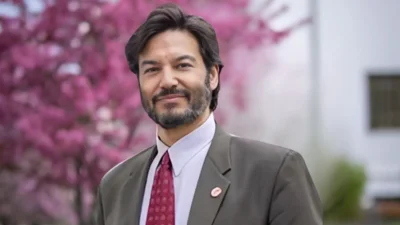President Jonathan Koppell | Official website of Montclair State University
President Jonathan Koppell | Official website of Montclair State University
Montclair State University fashion students have analyzed the style choices of Vice President Kamala Harris and former President Donald J. Trump in the context of the 2024 presidential race. The students, studying under Professor Abby Lillethun, assessed how both candidates use fashion to communicate their messages.
Professor Lillethun encouraged an unbiased analysis: “We want to hear your opinion as a fashion scholar. How do you see the candidates presenting themselves? Do you think it’s effective, given what you know about appearance as a communication tool?”
Arriana Johnson noted Harris' ability to maintain professionalism while experimenting with her wardrobe: “Kamala Harris is making it known that you don’t always have to wear a black pantsuit or a blue or red tie.”
Julie Halma observed Trump's consistent attire: “Trump’s suit is basically the same look every time, it feels very repetitive and very stiff, whereas Kamala has variety; you see more color in her clothing.”
Grace Mills appreciated Harris' creativity: “It’s interesting to see something new; the fashions are fun and something we haven’t seen before.”
Jacqueline Mancia Hernandez commented on Harris' lively presentation compared to Trump's serious demeanor.
Zuriel Vargas praised Harris for conveying modesty through casual wear like Chuck Taylor sneakers while maintaining distinction with blazers.
Lillethun supported these views by highlighting Harris' youthful energy in her choice of footwear.
Students discussed deeper implications of Harris’ pantsuits. Vargas noted they convey power: “The shoulder padding creates this frame that’s powerful.” Yamila Chege and Haniyah Khurman reflected on gender dynamics affecting women's fashion choices in politics.
Lillethun agreed with students about focusing on documented capacities rather than physical attributes. She remarked on formal wear being toned down yet formal without overly feminine details.
In contrast, Trump's style was dissected for its consistency. Kelvin Leyda pointed out his long red ties and blue suits as part of his brand identity. Nelson Dela Cruz suggested longer ties might make him appear slenderer.
The class discussed Trump's avoidance of patterns reinforcing tradition. Lillethun noted his signature red, white, and blue ensemble at public events: "His brand is very solid there."
Students also considered interpretations behind Trump’s open suit jackets and untamed ties suggesting an inviting demeanor or personal preferences regarding body shape.
Montclair fashion students concluded that while both candidates use fashion strategically, Harris’ diverse wardrobe resonates more strongly with younger voters today due to its inclusivity and creativity.
“The more positive qualities that students are mentioning reflects that she’s participating in our life,” said Lillethun about American life representation through attire choices between candidates.


 Alerts Sign-up
Alerts Sign-up